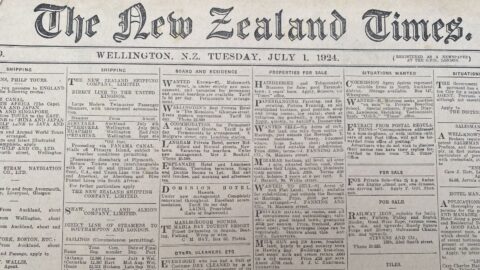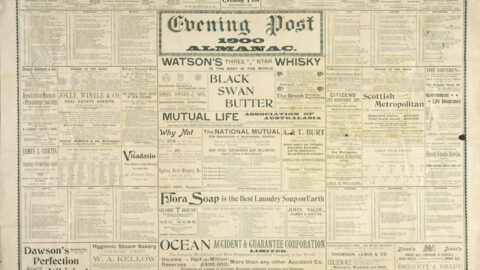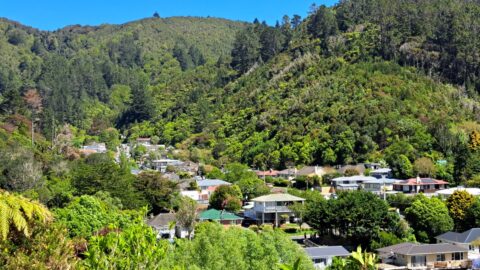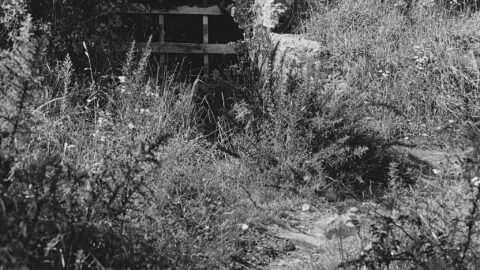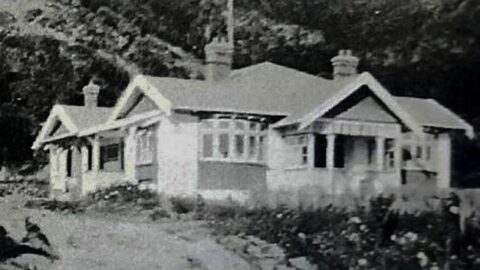VIRGIN FOREST
A HUTT VALLEY MILL
BUSH FELLING IN THE SUBURBS.
It is doubtful if many people in Wellington are aware that bush-felling is being earned out in the heart of the virgin forest so close to the city as just beyond the Lower Hutt. The general impression is that many years ago the; last of the bush suitable for milling purposes was cut out, and that all remaining was an old tree here and there in some inaccessible place, too difficult lo work in profitably, and in any case carrying a poor sort of timber at best. Messrs Strand Bros., of Lower Hutt, have proved that quite close to Wellington there is as rough country as any in the remotest parts of the North Island, and that this suburban bush contains some of the finest timber that has yet been put through the mill.
At the invitation of the firm a representative of The Post yesterday visited the bush and was shown over the extensive operations that are necessary to keep the Nainai mill going. The mill is situated about four miles from Lower Hutt Railway Station, and is reached by an excellent road. The road ends at the mill, which, is at the foot of a saddle 800 feet in height, with a grade of l in 2½. Up and down this chute from the mill into the bush trucks of timber are hauled by steel cables, and the monthly out put from the mill averages over 100,000 ft of timber. A winding engine is perched on the top of the saddle, hauling logs from the bottom of the valley on one side and lowering them to the mill on the other. Tram-lines run into the bush for considerable distances, branching off from what may be termed the “main trunk.” This last line ends where the trees fall — the others go where they are to fall next.
The timbers are chiefly rimu and white pine (or Kahi Katea), birsh, rata, and some matai. Of actual bush there is 1400 to 1500 acres ; but it is denser that Messrs Strand thought at first when they took it up. “No one was more surprised than we ourselves were,” remarked a member of the firm, “when we found what a large quantity of marketable timber had been over looked in these gullies.”
The story of the enterprise has a little romance in its composition. The ‘hills on the northern side of the harbour, from the heads to the Hutt Valley, appear to run in almost parallel lines or folds, but they meet where the flat land is and seem to there form loops. While the head of the long valleys between the hills may be a mile or a mile and a half from the flat they cannot be reached by a practicable road in under fifteen minutes to Lower Hutt town. The cost of transport- of timber in these circumstances was too heavy to go beyond what was considered the paying point. Up to this the bush was cut out; beyond, it remained untouched until the Messrs. Strand decided to carry a line sheer up the face of a hill almost a cliff, and perpendicular for all practical purposes. They had many candid critics, some of large experience in such works, and the general opinion seemed to be that the brothers were attempting an impossible, if not foolish, task. It certainly looked like it at first, for there was a good deal to learn, and something to unlearn. But the timber was in the cul de sac, over the hill, steep as it was, and it would have to be dragged over or left where it was. It now comes over, and that in logs weighing from two to four tons, and some of them measuring between 4 feet and 5 feet in diameter. ‘ Several logs of these dimensions were cut and hauled out of the bush to the mill yesterday. ‘
The living tree of this morning will be in the railway, trucks at the Hutt in the form of boards in the evening. Almost all the timber is used in Petone and Upper and Lower Hutt, but some white pine is sent into Wellington. For many years past timber for this district has “been brought down by rail. Now it “is available on the spot.
Over twenty men and nearly as many horses are kept constantly employed in the bush, and at the Nainai’ mill and Whiteman’s Valley mill, which, by the way, turns ‘ out 80,000 feet of timber monthly. Telephones connect mill, hauling engine, and the log-hauling camp.
As the timber is being cut out grass is put down in readiness for grazing, and in some parts of what a few months ago was burned and cut out bush, cattle are now feeding.
Immense quantities of firewood lie here only awaiting transport, but the plant is too much occupied in getting out building timber to be utilised for any other purpose.
More broken country it would be difficult to find in ‘the vicinity of Wellington, but a very important and seemingly a very profitable business is being carried out in it. It is hard, hazardous work, and calls for quite as much foresight and business calculation as brain and muscle; but it seems to have a sufficiency of both, and in well-balanced proportions.



